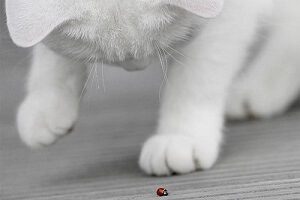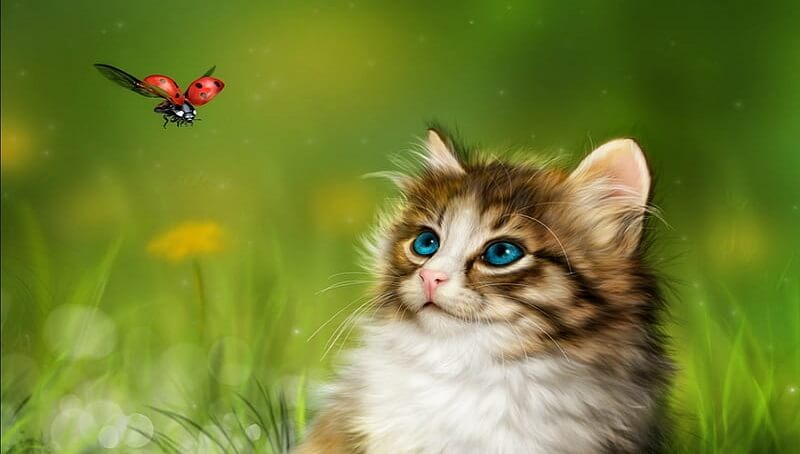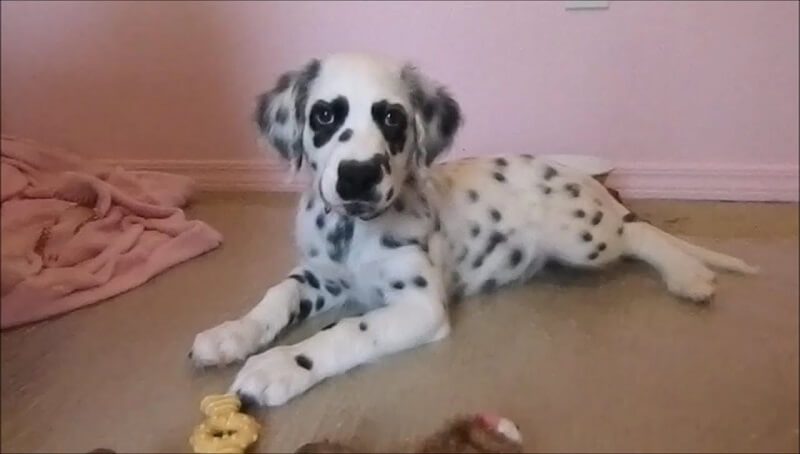If you’re a cat owner, you surely know how fascinated these animals are with not only ladybugs but all kinds of six-legged, winged insects. As long as you see your pet playing with a ladybug, running and chasing it, there’s nothing to worry about. But what if you notice the cat munching on one? What if you notice it eating a bunch of ladybugs? What would happen if your cat likes to eat ladybugs? Should this worry you in any way? – It turns out there isn’t any harm in your cat eating a ladybug or two.
Even so, there are other insects and even some ladybug varieties that can be toxic for cats. This article will give you a better understanding of what would happen when your cat eats a ladybug and what insects are really bad for your pet.
Are Ladybugs Poisonous to Cats?
Most veterinarians would agree can only become harmful for your cat when consumed in considerable quantities. I, for one, tell the owners of my patients to relax whenever they tell me that the animal has eaten a few ladybugs. If, in turn, the cat has gone through a large number of ladybugs, the risks of an upset stomach or other side effects like ulceration increase considerably. The good news is that usually, a cat will stop eating ladybugs after its first one, as they have a really bad taste.
You might also like my articles on whether cats can eat Aglaonema, Mayo, or Cinnamon.
Another thing to keep in mind is that although the average, garden-variety ladybug won’t affect your cat’s health in any way, there are some ladybug species that might be bad, especially in larger quantities. As per the ASPCA, you should keep not only cats but also dogs away from the Asian lady beetles, which are very similar to the ladybugs you already know.
But What Are Asian Lady Beetles?
The Asian lady beetle, also known as the harmonia axyridis, looks just like a ladybug but will usually be a little bigger. These Asian lady battles can be either red or orange, while the common ladybug will usually be red. The color is so similar, that it will be really hard to differentiate between these two species.
Know The Difference Between Ladybug And Asian Lady Beetle
Although both the Asian lady bottle and the Ladybug have dark black spots when one is next to the other the Asian lady beetle will have considerably more of these spots. You will also spot a clear white mark between the body and the head of the Asian lady beetle, very similar to the shape of the letter M. It will also have considerably more white on the head than your average Ladybug.
The Asian lady beetle is also more likely to infest your home and will have a more negative effect on your garden. Asian lady beetles will usually invade your home in colder months and are on the list of known pests. Asian lady beetles can be very harmful to pets, especially in larger quantities, while ladybugs are considered harmless.
What Could Happen if a Cat Eats a Ladybug?
 The good news is that it’s usually pretty hard for a cat to eat a large quantity of either Asian lady beetles or ladybugs because it is usually pretty hard to find either of them in bigger groups. Even if the pet finds a larger group of these insects, eating one will usually be enough, as they taste horrible. Even before your cat can eat a ladybug, it will set off a horrible smell that would usually push away any predators, including your pet.
The good news is that it’s usually pretty hard for a cat to eat a large quantity of either Asian lady beetles or ladybugs because it is usually pretty hard to find either of them in bigger groups. Even if the pet finds a larger group of these insects, eating one will usually be enough, as they taste horrible. Even before your cat can eat a ladybug, it will set off a horrible smell that would usually push away any predators, including your pet.
Most of the time, eating just one or two Asian lady beetles or ladybugs will have little to no effect on the cat’s health. In larger quantities, these bugs are known to cause all kinds of side effects, from symptoms of gastroenteritis to visible ulceration inside the mouth. There is also a risk for the Asian lady beetles to stick to the palate, which means that you will need the help of a vet to remove them.
You should get your cat to the vet as soon as possible if you notice it isn’t feeling all that great after eating one Asian lady beetle or ladybug.
Although it doesn’t happen all that often, you should always be prepared to counter an Asian lady beetle infestation of your home. You should especially keep these insects in check if you notice that your cat has no issues eating insects and isn’t repulsed by their taste.
What Other Insects Are Poisonous to Cats?
Most of the bugs you will find in your garden and around your home will not be poisonous to your cat. There are a few, though, especially the ones that can sting, that can leave some nasty swelling on your pet, or even have a worse effect on its health. Let’s go through some of the most dangerous insects you would commonly see around your home.
Spiders
Not all spiders will be harmful to your pets. Even so, if you live in parts of the world where more dangerous spiders live, if your cat gets in contact with a bad kind of spider, it could have very bad effects on its health, even to the point of the encounter becoming lethal. Among the most dangerous species of spiders are the brown recluse and the black widow, which you should prevent your pet from getting in contact with. Remove the spider as soon as you notice your cat playing with it, to prevent the bad effects of a bite. Be careful when removing the spider, because its bite can even be dangerous for you.
If you suspect that your cat has been bitten by one of the nastier spiders, you should look out for symptoms like:
- Bruising
- Fever
- Itching
- Swelling
- Scabbing
- Redness
- Skin that’s hot to the touch
- Vomiting
Some extreme cases will lead to organ failure or can even become lethal. You will have to take your cat to the vet as soon as possible if you suspect it has been bitten by a venomous spider.
Caterpillars
Your cat will find this slow-moving insect quite interesting, especially because most of them are very brightly colored. Although a rare occurrence, in the event that the cat ate a caterpillar, you will usually notice esophagitis, gastritis, drooling, irritation of the mouth, or some other similar symptoms. Rashes on the skin caused by the bite of the caterpillar sting are also a thing, but the good news is that most cats will be protected from this by their coats.
Of course, as with most insects, not all caterpillars are bad for your cat, but you should try to remove any caterpillar you see in your garden especially if you own one or more pets.
Fire Ants
Fire ants are another type of insect you should try to remove from your cat’s reach. The bad thing about these tiny pests is that they are not only aggressive, but they are also very attracted to pet food in general. They are usually more than one and their mites might hurt your cat, even up to the point of it needing a veterinary consultation and treatment.
Wasps and Bees
A single sting by a wasp or a bee might be enough for your cat to get an aggressive allergic reaction, just like humans do. Some of the more common symptoms are irritation around the area of the sting and pain, This should usually go away in time.
In some cases, your cat might be allergic to these stings just like humans are. The worst thing that could happen is of course the anaphylactic reaction that would require immediate professional help, but other symptoms are also possible, like:
- Pale gums
- Hives
- Extreme swelling especially of the face or limbs
- Diarrhea
- Struggling to breathe
- Weakness
- Vomiting
Stinkbugs
Most people find the name of this insect pretty funny, but the stinkbug is actually pretty bad for your cat’s gastrointestinal system. Most of the time, the issues your cat will experience from eating a stinkbug won’t be all that serious. They can experience diarrhea and vomiting due to the stinkbug’s secretions.
Are Insecticides Harmful to Cats?
Although insecticides in small amounts should have no effects on a cat’s health, overexposure can become toxic at some point. Insecticides can become toxic for cats if you spray your lawn and the cat walks through it, getting its paws covered in the substance.
You will notice your cat has gotten insecticide poisoning if it experiences any of the symptoms: respiratory failure, excessive salivation, muscle tremors, anorexia, vomiting, or fever.
Conclusion
You shouldn’t stress too much when it comes to ladybugs and your cat. This is because most of the time, the cat will just eat one and then never feel the need to eat them ever again, due to their bad taste. The garden is full of insects that can be harmful to your pet aside from ladybugs, like Asian lady beetles, caterpillars, fire ants, spiders, wasps, or beetles, so there are a lot of reasons to worry aside from ladybugs.




